Billie Holiday: celebrate the centenary of the great Lady Day
Friday, April 10, 2015
Jazzwise celebrates the centenary of Lady Day with a selection of classic reviews from the archives.
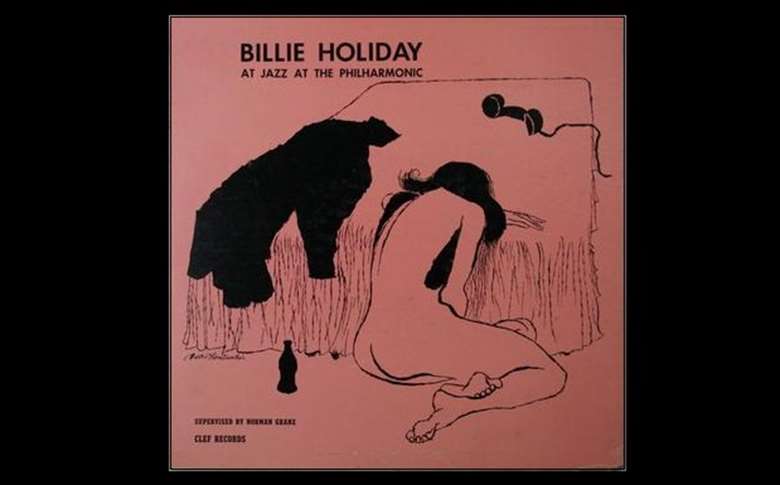

At Jazz At The Philharmonic
Clef/Verve
Holiday (v), Howard McGhee, Buck Clayton (t), Trummy Young (tb),Willie Smith (as), Illinois Jacquet, Wardell Gray, Coleman Hawkins, Lester Young (ts), Milt Raskin, Ken Kersey, Tommy Tucker (p), Charles Mingus, Al McKibbon (b), J.C. Heard and Jackie Mills (d). Rec. 1945-47
People call Billie Holiday THE voice of jazz. However, her discography on vinyl is convoluted: her 1930s 78rpm output, where she was normally a featured singer rather than the star, had to wait until the 1960s to appear in any ordered way and the 1990s to appear substantially on CD. Ditto her 1940s Deccas. By the time she settled with Verve in 1952 her voice had darkened and lost its suppleness.
This set of live performances from the mid-40s, however, finds her in good musicianly company, vocally at a peak and expressively in the mood to sweep all before her across a classic selection of material, including ‘Strange Fruit’ and ‘Billie’s Blues’. The CD configuration more than doubles the amount of material originally available on vinyl, though the sound quality on some of the “new” tracks is not exactly brilliant.
Keith Shadwick
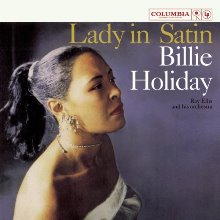
Lady in Satin
Essential Jazz Classics EJC 55428
Billie Holiday (v) with the Ray Ellis Orchestra. Rec. 1958
As a bona fide jazz classic, an understanding of Holiday’s real-life history helps give this album context and adds both meaning and depth. As one half of the mind struggles and reacts to the boozy huskiness in her voice and shaky intonation, the other half listens, searching for meaning in both voice and lyrics. This disjunction produces an uncomfortable listening experience. Yet here is the unification of the singer’s history and art, unified as a single self that is infinite and total, a bonding that enables Lady in Satin to realise its full meaning. Here the creative moment on pieces such as ‘For All We Know’ is stripped of artifice and come as close to the expression of pure feeling as anything else in jazz.
The result can be both profound and moving. Just over a year later Holiday would be dead, and some fans have claimed they can hear her dying on this album. Originally issued in both stereo and mono versions, the former did not include ‘The End of a Love Affair.’ Holiday did not know the song and had great difficulty in singing it at the 19 and 20 February 1958 sessions. In the event a backing track was mixed to mono and Holiday later sang over it. The album also includes bonus tracks from the August 1955 session with Sweets Edison and Benny Carter, her first Verve session that brought her together with musicians worthy of her artistry that appeared on Music for Torching and Velvet Mood. The studio version of ‘Fine and Mellow’ is included (with different personnel to the TV show The Sound of Jazz) and two tracks recorded live at the Plaza Hotel in September 1958, when she appeared alongside the Miles Davis Sextet.
Stuart Nicholson
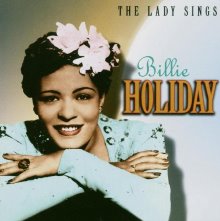
The Lady Sings
Proper PROPERBOX26
Holiday is now such an icon that she’s been given the whole-hour treatment on BBC2 (although they’d have done better to revive their John Jeremy documentary The Long Night Of Lady Day). What that means for the general public though, is that she’s up there with Judy Garland and Edith Piaf – seen, in other words, as a tragic figure whose ability to move is presumed to derive from her own problems. Jazz fans, on the other hand, are liable to go the opposite extreme and argue that her innate interpretative ability was just a matter of technique.
Prolonged exposure to her early recorded work, as afforded by this release, underlines that there was a unique style and technical ability, long before it was exaggerated by ongoing personal difficulties. It may well have been influenced by Bessie Smith and Louis Armstrong’s vocalising, but her approach to timing was more free and wayward than anyone before Sonny Rollins (one of her greatest fans). Though there are still listeners for whom the second half of the 1930s was her peak, those performances have some mannerisms, including a falling vibrato at phrase-ends (probably derived from Ethel Waters) that soon disappeared. Not only is the material at this period often sub-standard or otherwise inappropriate (‘Miss Brown To You’ being the obvious example) but also the keys are sometimes too low for her lowest notes and occasionally the tempos make it difficult for her to fit in all the words.
Among the many unsurpassable delights of the 30s small group recordings are the short solos by master musicians – Teddy Wilson who led the bands on many of the sessions, of course, but also Johnny Hodges, Harry Carney, Roy Eldridge, Ben Webster, Buck Clayton, Lester Young and others. It’s not just the solos either, for all the above play brilliant counter-melodies to the voice, Cootie Williams on ‘Moanin’ Low’ being particularly extraordinary. Another joy of this period is the gradual addition of songs that were already standards (‘I Cried For You’, ‘Mean To Me’) to balance those then new, some of which became standards thanks to Billie, for example ‘This Year’s Kisses’, ‘Foolin’ Myself’ and ‘Easy Living’.
Already before the 30s end at the close of the second disc, some specially composed material renders the jam-session approach less apt, such as Irene Wilson’s ‘Some Other Spring’, Carmen McRae’s ‘Dream of Life’ and the ‘song of the century’, ‘Strange Fruit’. The cut-off is less than immediate, but the gradual move to more bland and less active backgrounds coincides with Holiday’s full and conscious assumption of her own artistry. Two 1940 tracks have excellent Don Byas, while ‘Laughing At Life’ not only has Lester’s last major solo here but shows him setting Basie-style riffs, a type of accompaniment not heard elsewhere. With the inclusion of all 16 tracks done for Commodore, it’s not till Disc 4 that we get the strings (‘Lover Man’, ‘That Old Devil Called Love’) and other big-band tracks, such as two associated with Bessie Smith and one from a great successor, Dinah Washington (‘Baby Get Lost’).
Whether or not this box was intended as a spoiler for the 10-CD Columbia set of her first decade in the studio, its 99 tracks actually cover a longer period (1935 – 49) and it works as a programme in its own right. The quality of the remastering and of the originals, while slightly uneven, is very serviceable and, as usual with Proper, this is a great bargain.
Brian Priestley
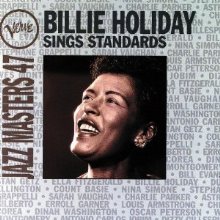
Billie Holiday Sings Standards
Columbia/Legacy CK 65048
Although many maintain that Billie Holiday’s later work, for Verve in the 50s, is just as good as that of her so-called ‘Golden Years’ at Columbia in the 30s and 40s (or even better than it, courtesy of the ‘lived-in’ quality beloved of the large number of jazz followers who prefer their music to emanate from doomed legends rather than from professional artists), these 18 tracks – only two of which come from the 50s album Lady in Satin – provide great evidence to the contrary. All the affecting qualities of Holiday’s voice – the uniquely plangent timbre, the melancholy lilt, the intelligently intimate phrasing, the liberties with the time etc – are in place. Only the later diction and intonation problems are missing. In short: the perfect introduction to the work of the greatest singer in jazz and that of her stellar swing accompanists.
Chris Parker
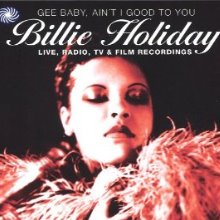
Gee Baby, Ain’t I Good to You: Live Radio, TV and Film Recordings
Fantastic Voyage FVDD010 |
Billie Holiday (v) with a variety of accompanists between 1934 and 1958 including Duke Ellington and his Orchestra, Count Basie and his Orchestra, Eddie Condon and Jazz at the Philharmonic. Rec. 1950s
Holiday’s oeuvre has been recycled again and again as the recordings she made between 1933 and her death in 1959 are of course finite. So this album is a welcome change of pace, gathering a wide variety of performances from film (‘Saddest Tale’ from Symphony In Black with Duke Ellington) TV (from a 1958 Art Ford Jazz Party where her emaciated face comes as a shock on the TV clip itself) to broadcast (some fairly run-of-the-mill dates broadcast from the Storyville club in Boston in 1953). Although several of these performances have been well circulated over the years, this 2-CD represents a wide range of performances, some of variable sound quality, which are good to have been brought together in one collection. There’s a rare performance with Percy Faith and the Woolworth Orchestra and a laid back version of the title track, originally recorded by Don Redman in the 1930s, and a seldom credited influence on Holiday’s style. The sleeve notes leave a bit to be desired, conspicuously avoiding key facts about Holiday in the public domain since 1995, but a good compilation that goes beyond the rote compilations of her Columbia-Decca-Verve material.
Stuart Nicholson